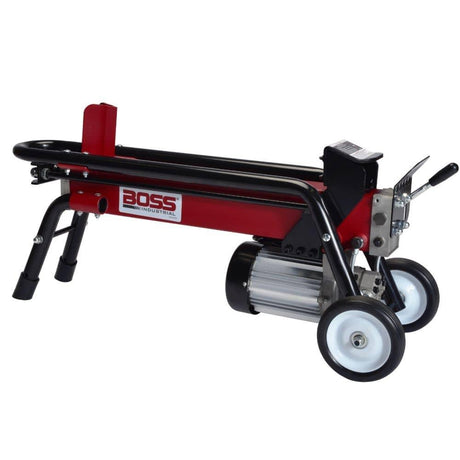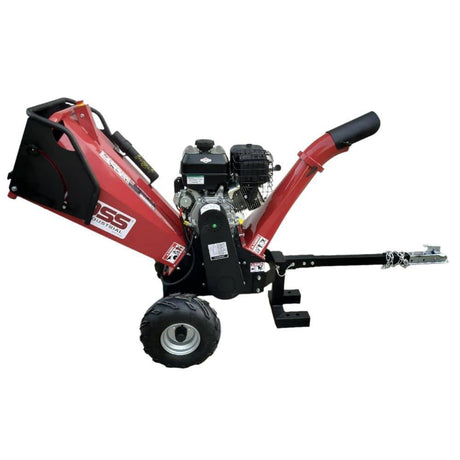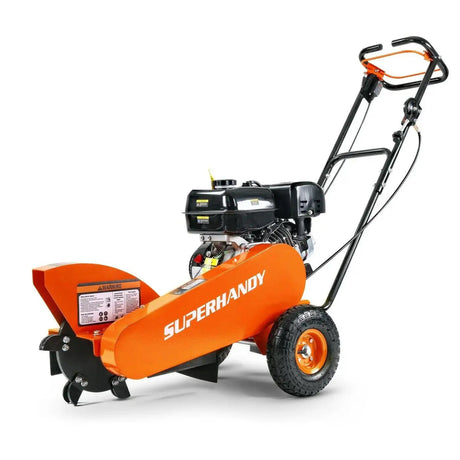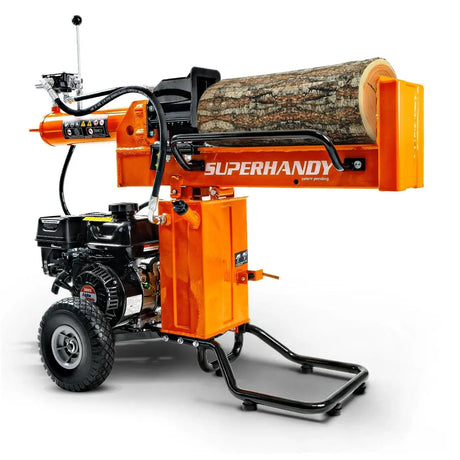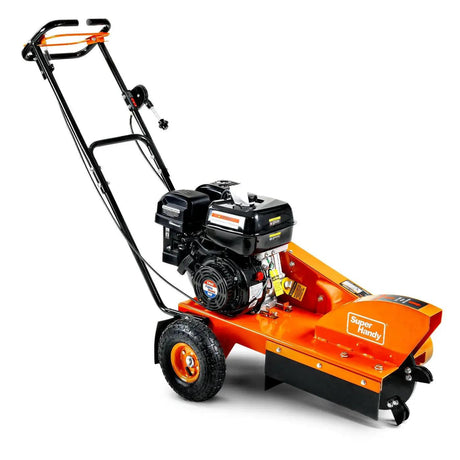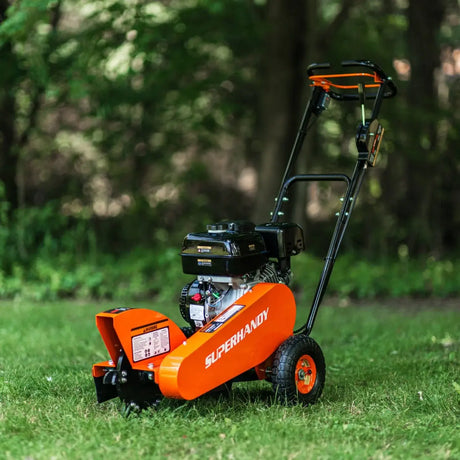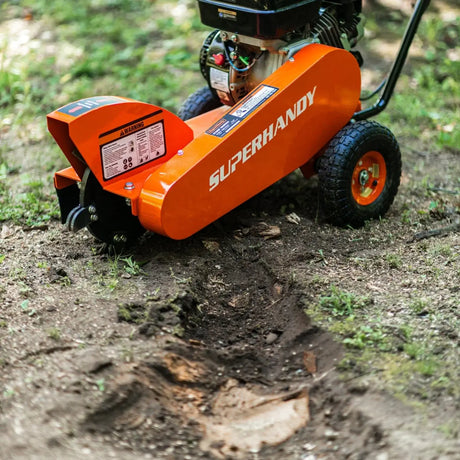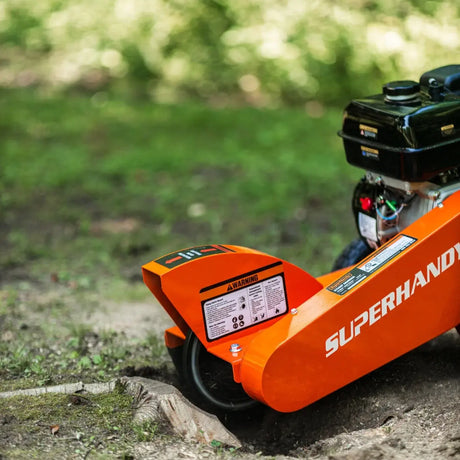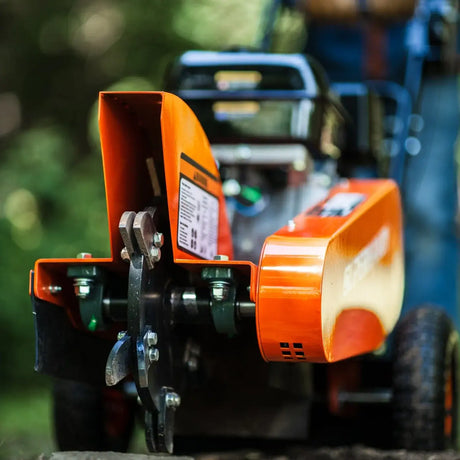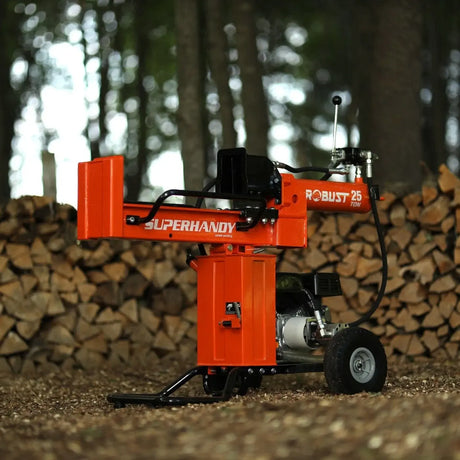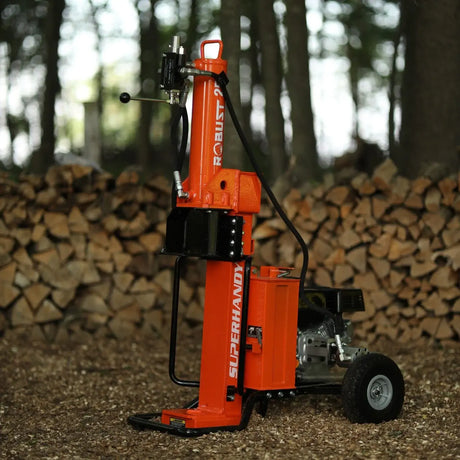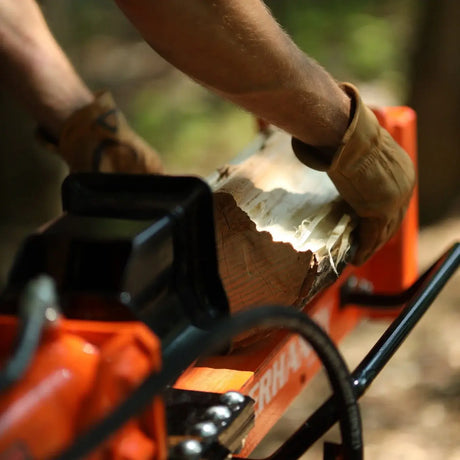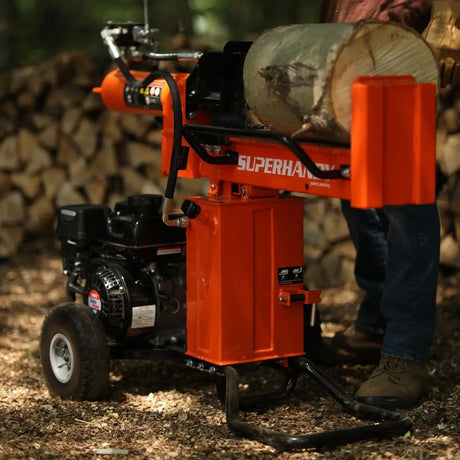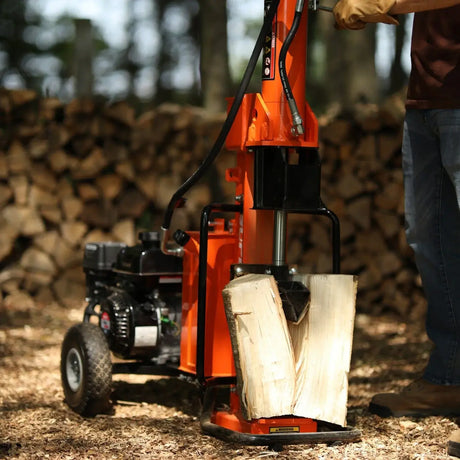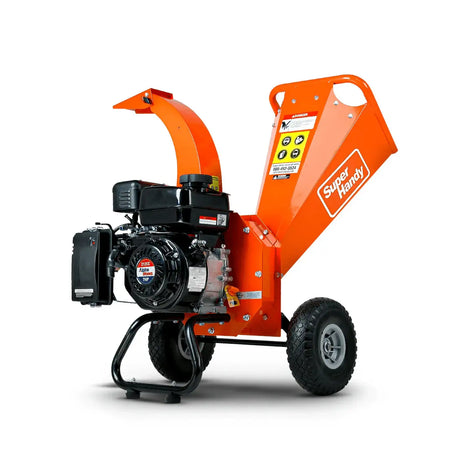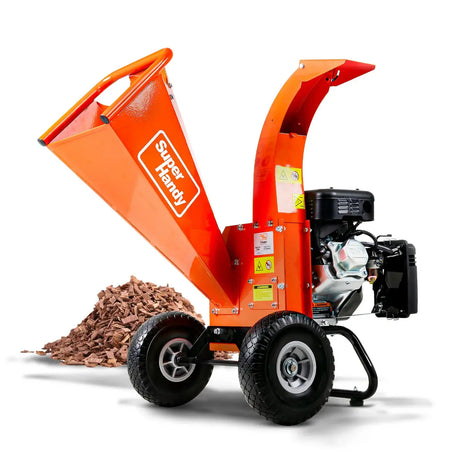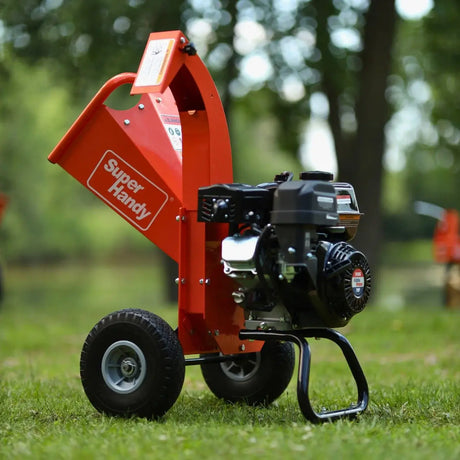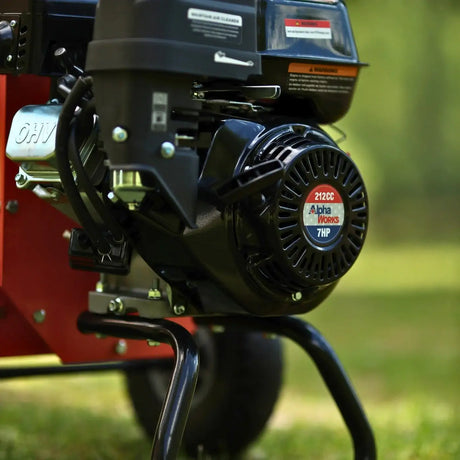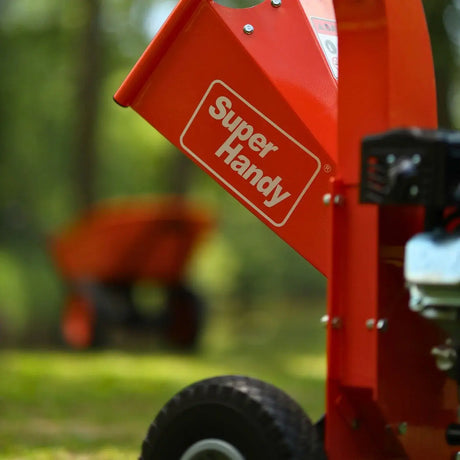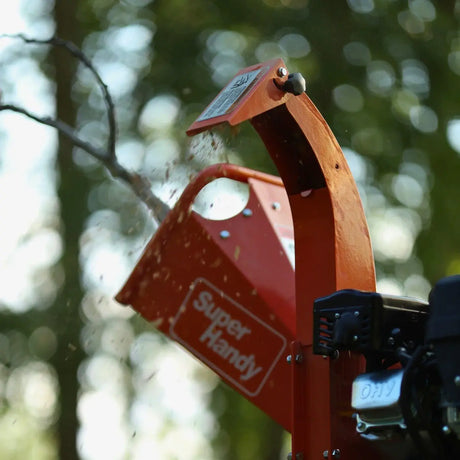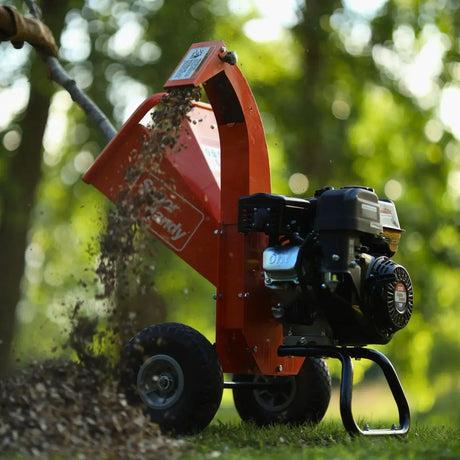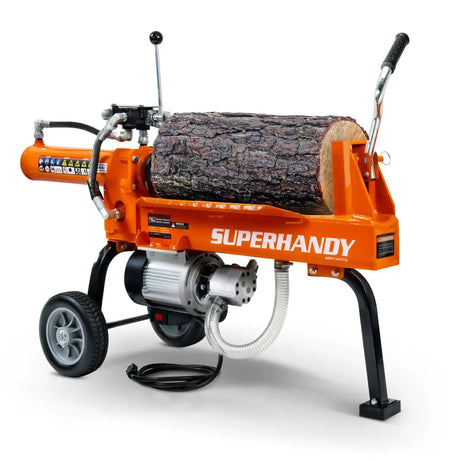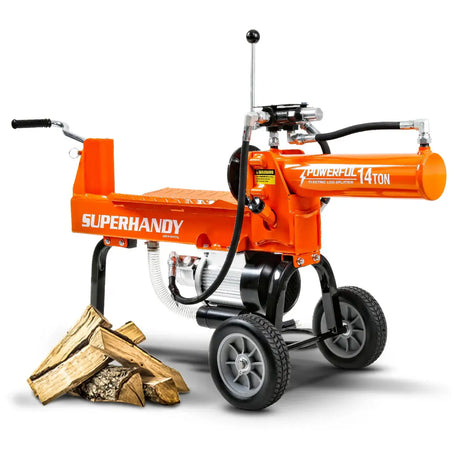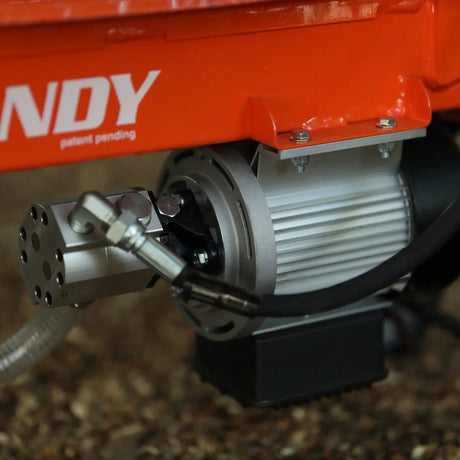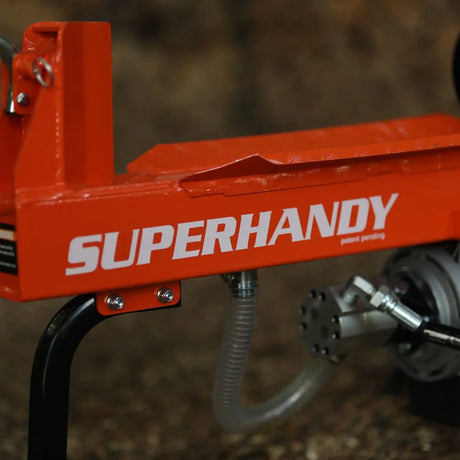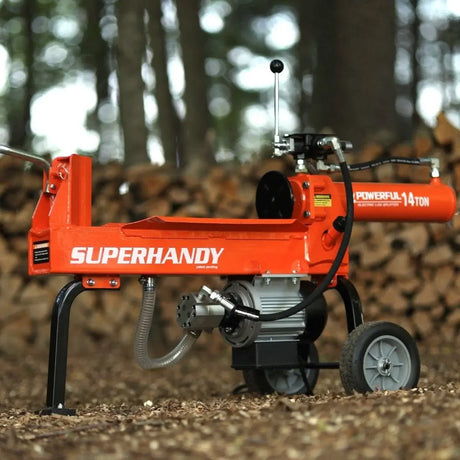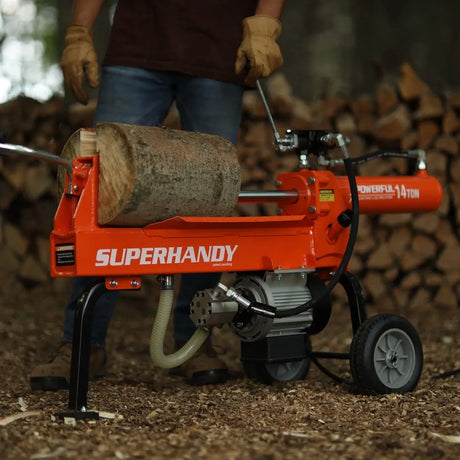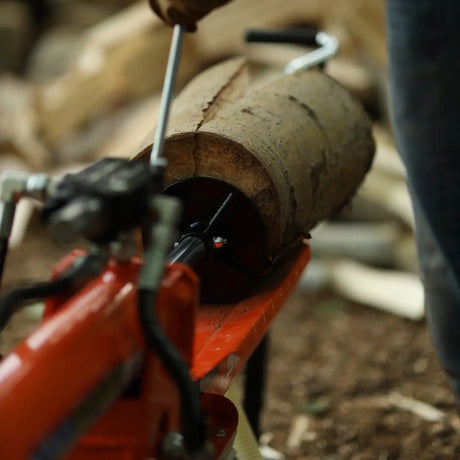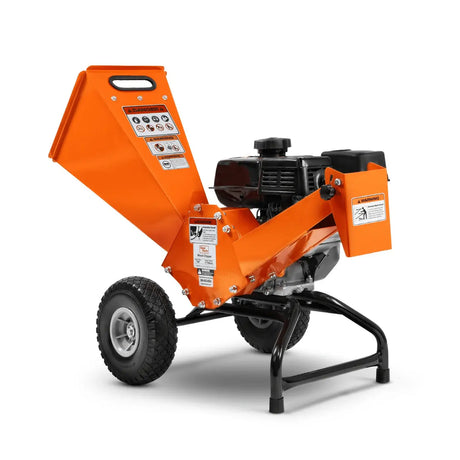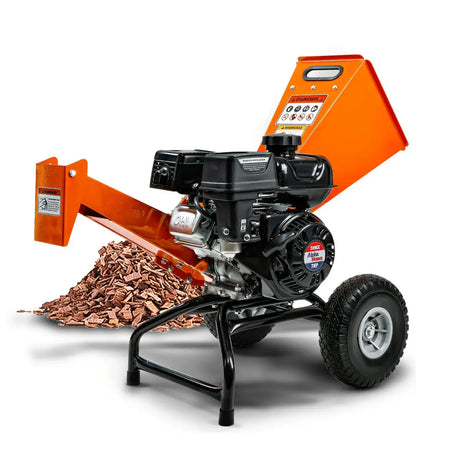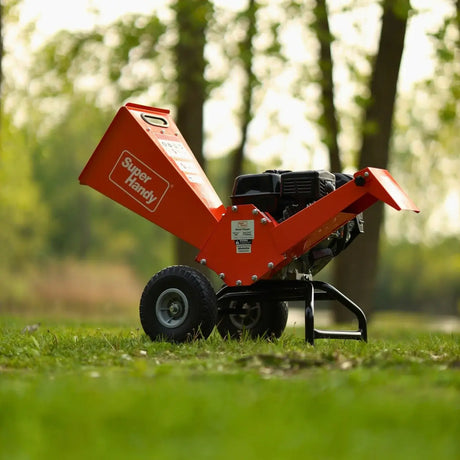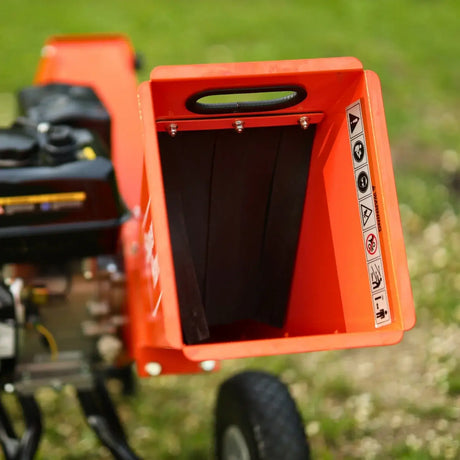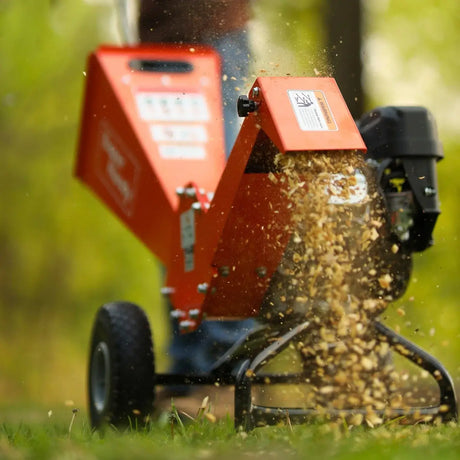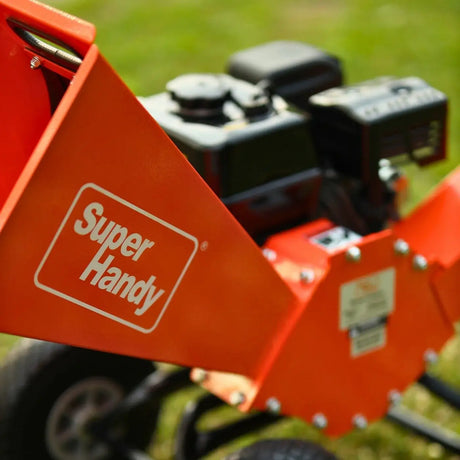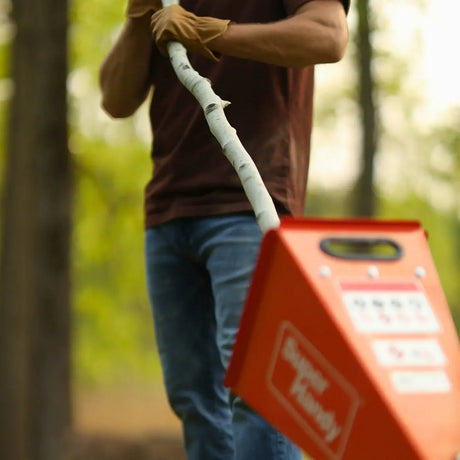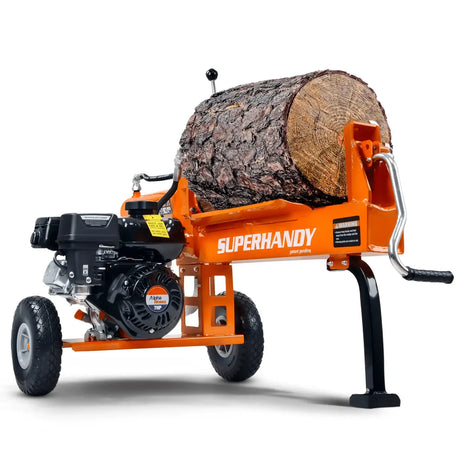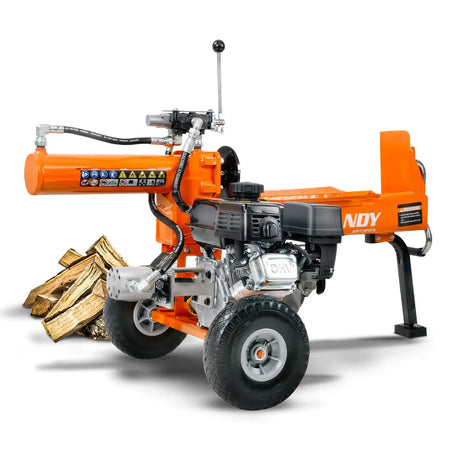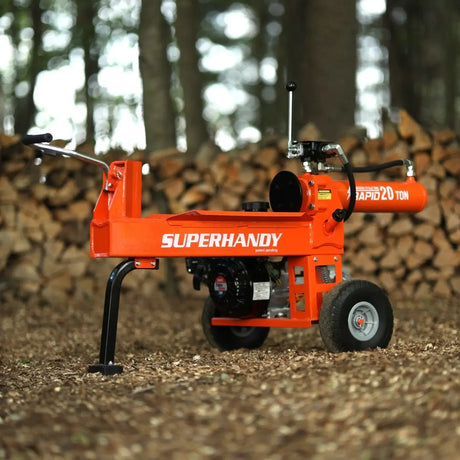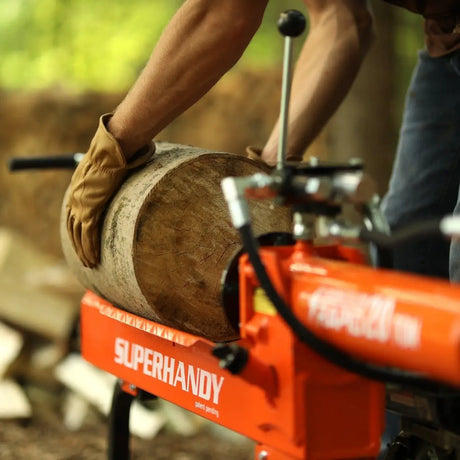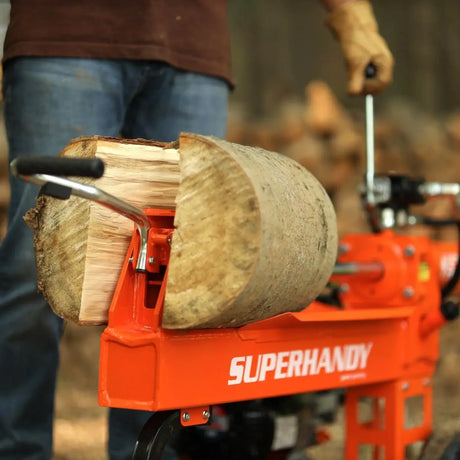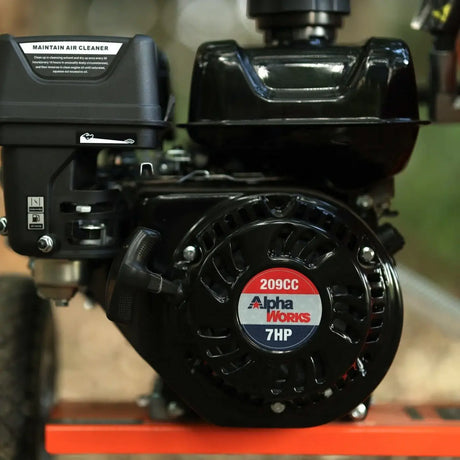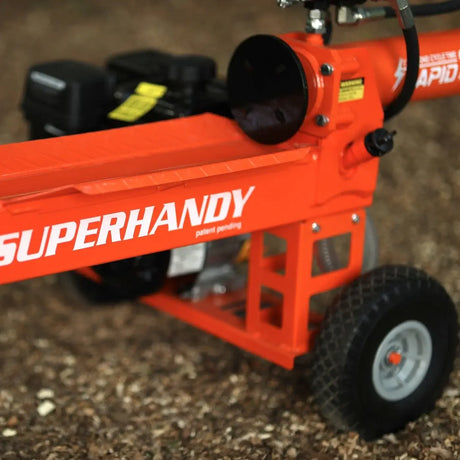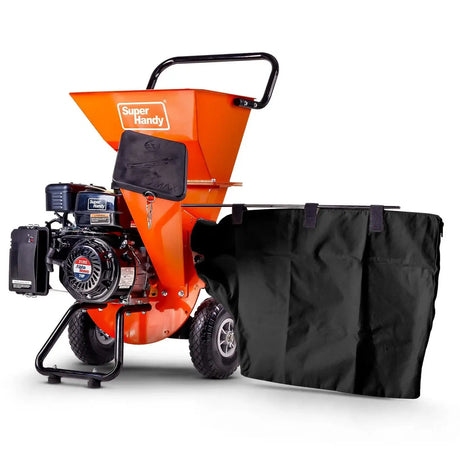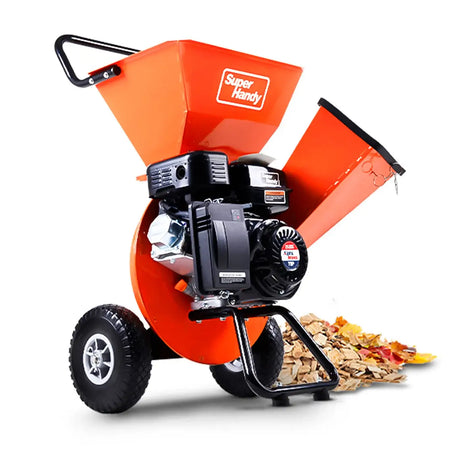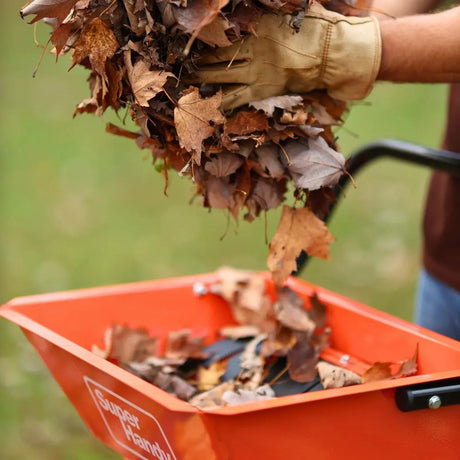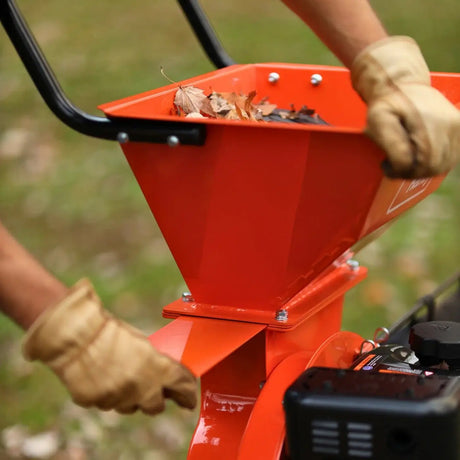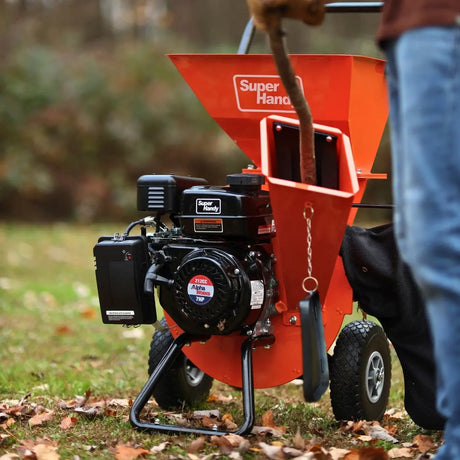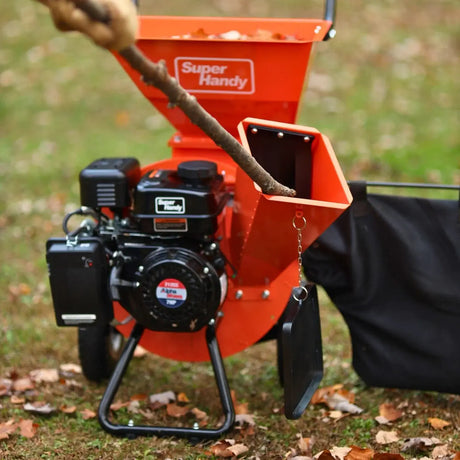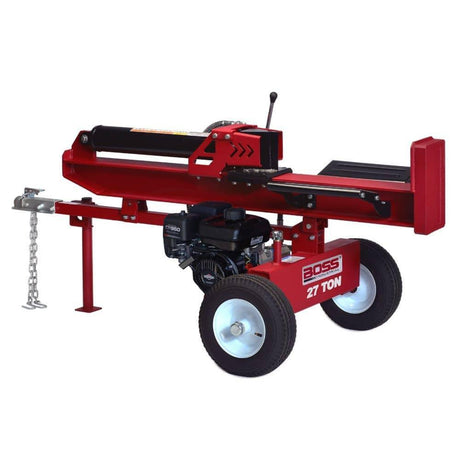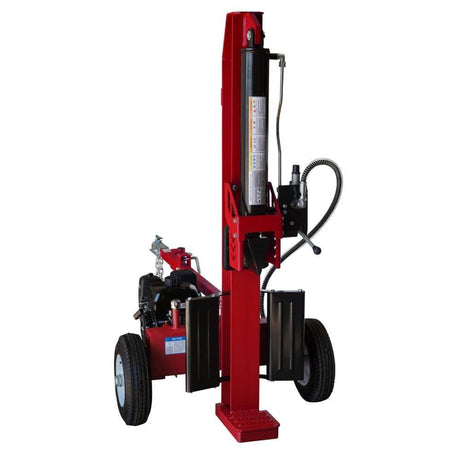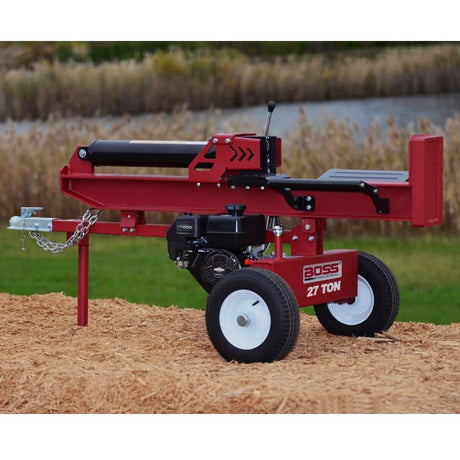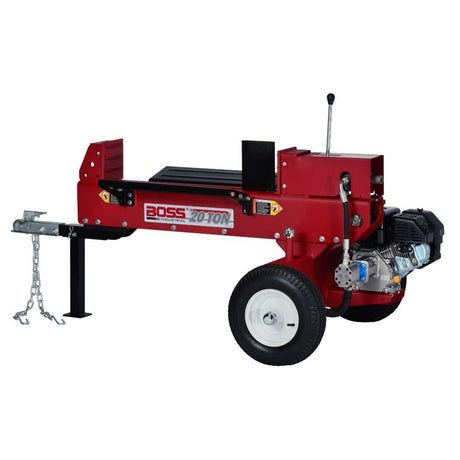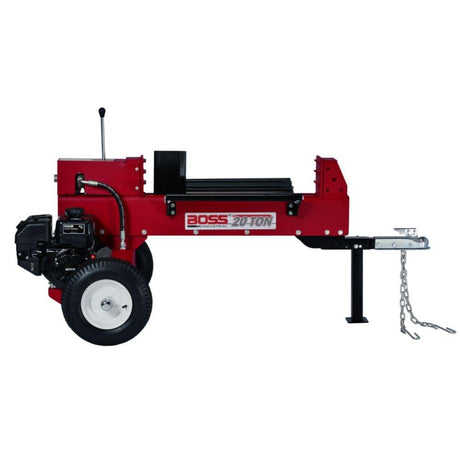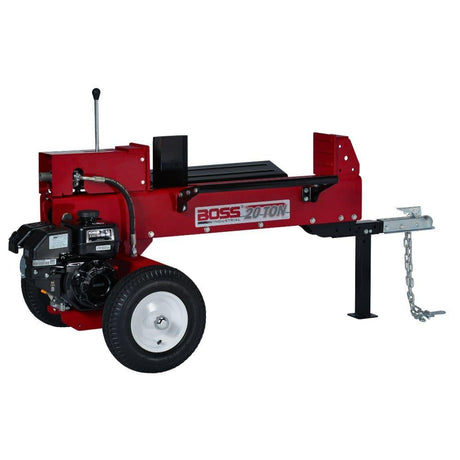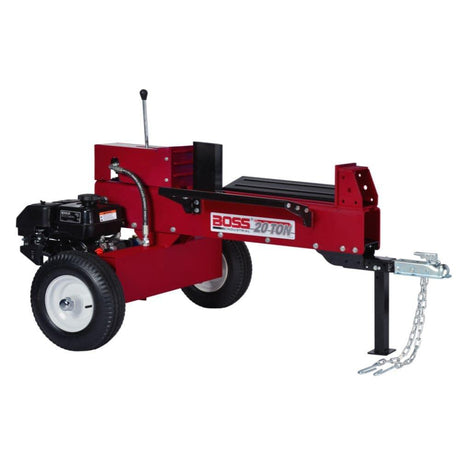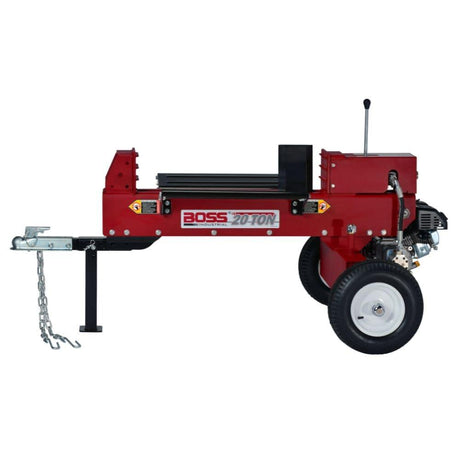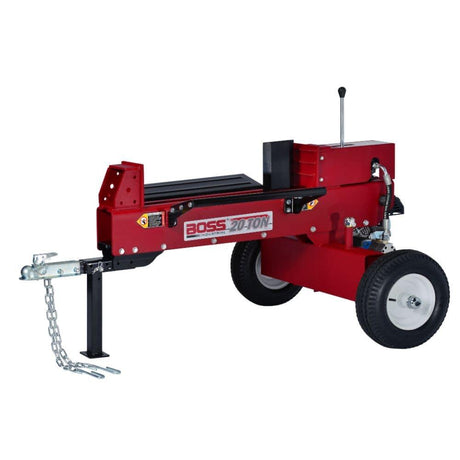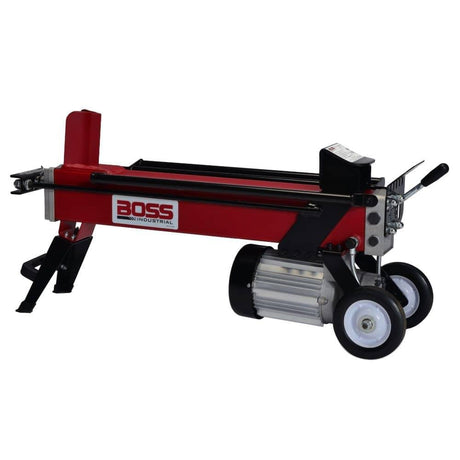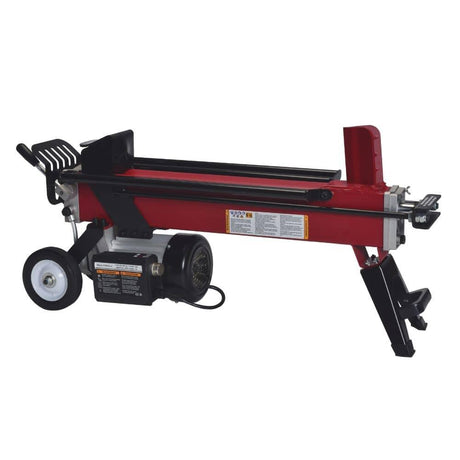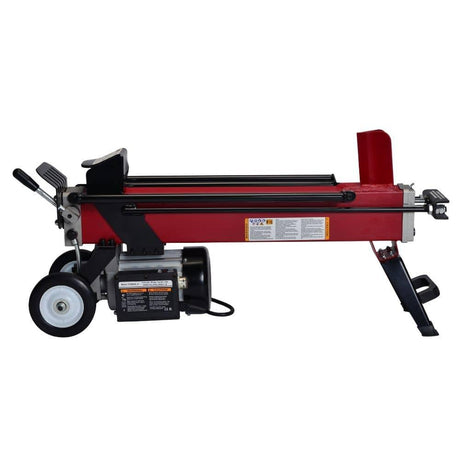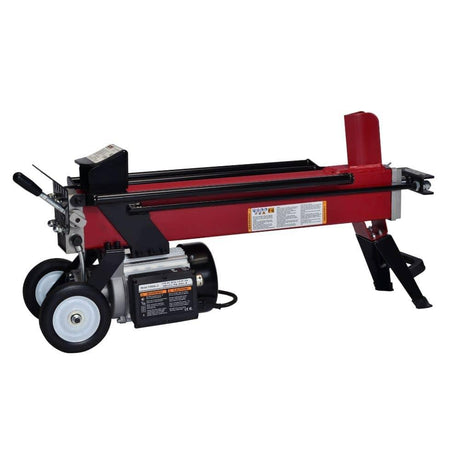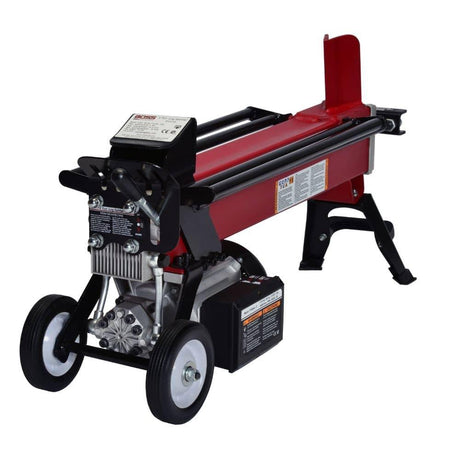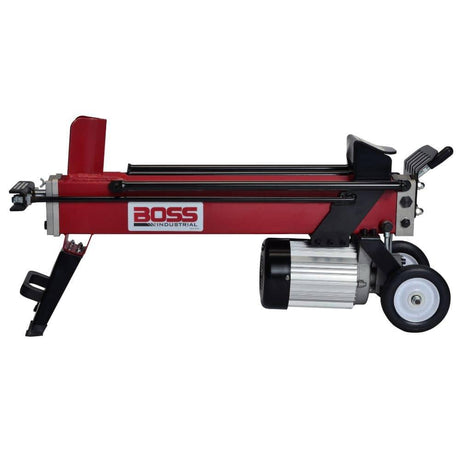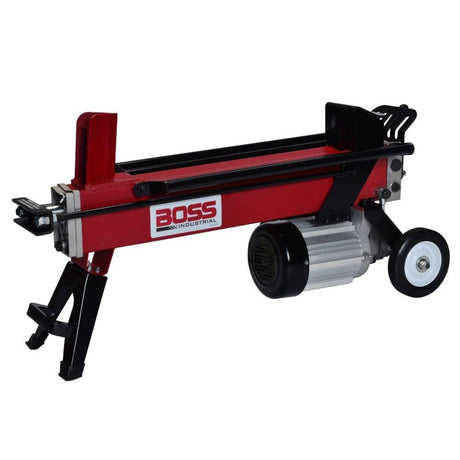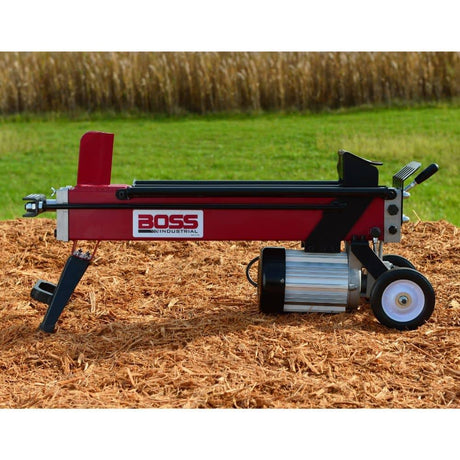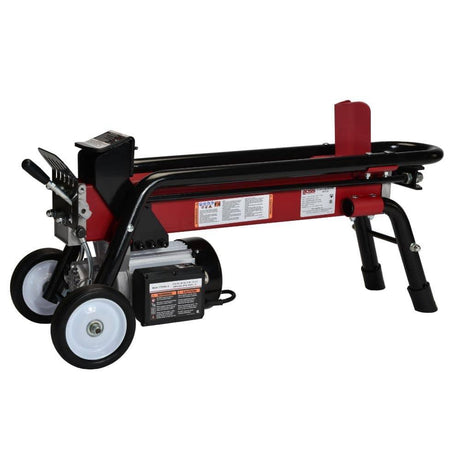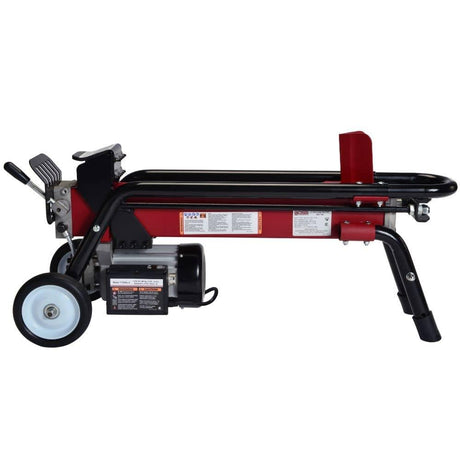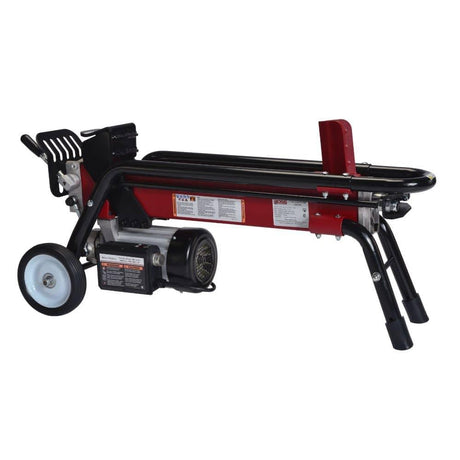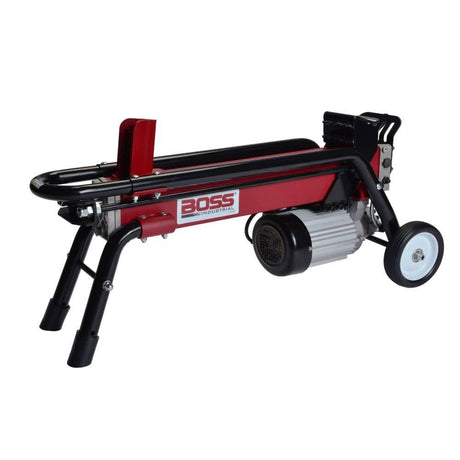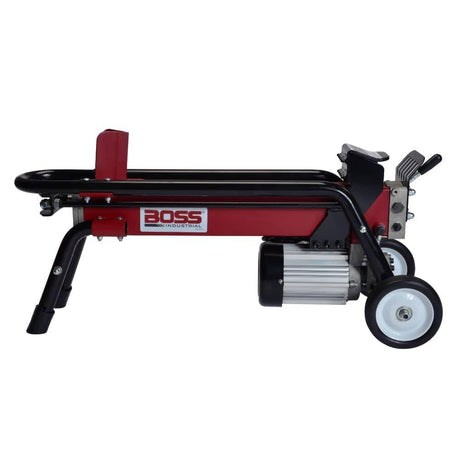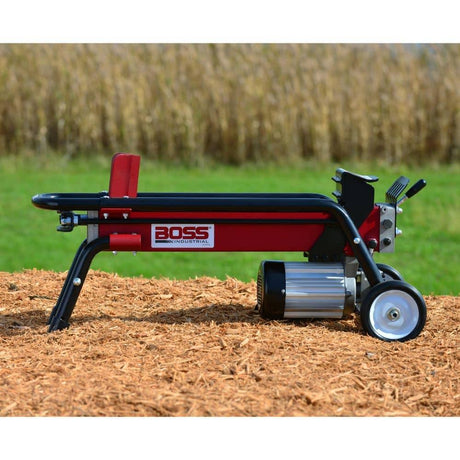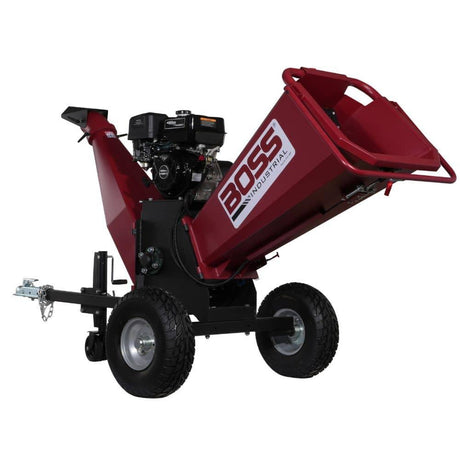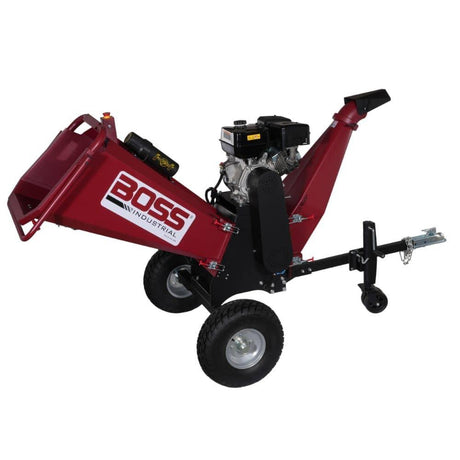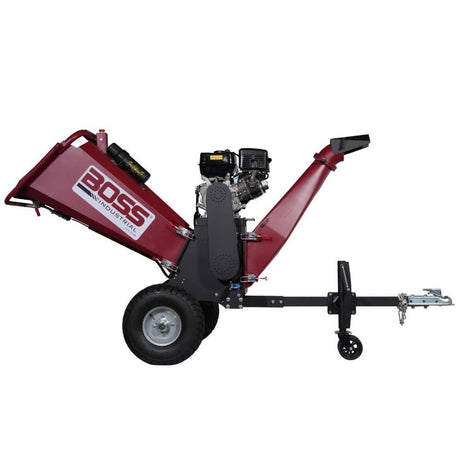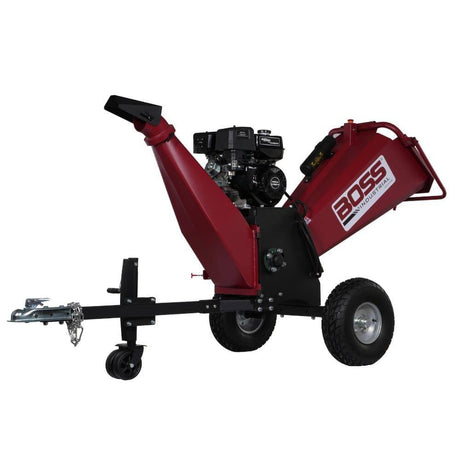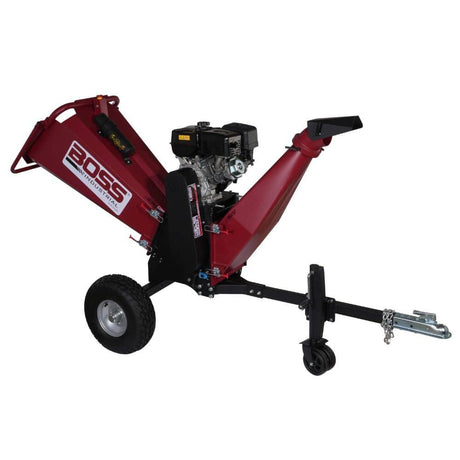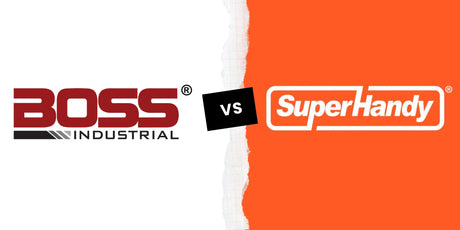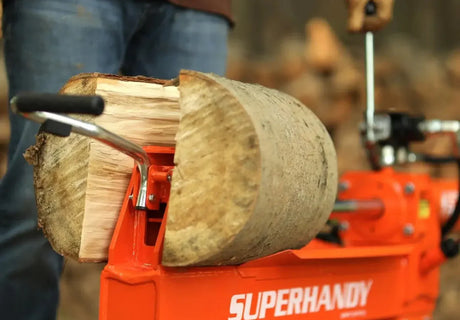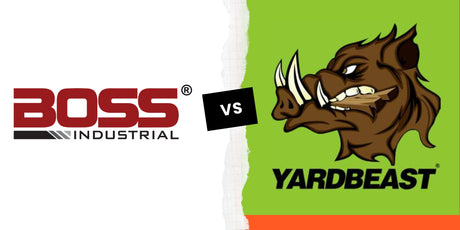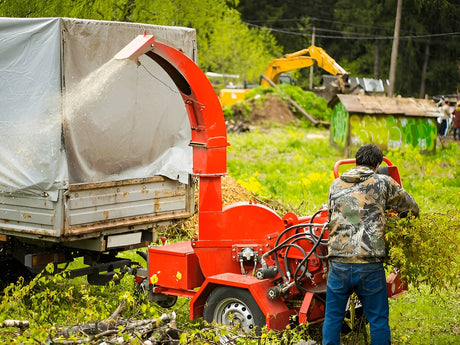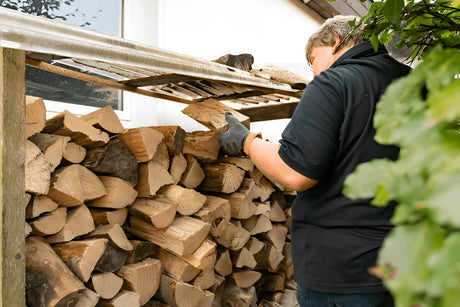If you're shopping for a log splitter, you've probably come across two main types: hydraulic and kinetic. While they both get the job done, they couldn't be more different in how they operate-and which kind of user they're best for.
Whether you're clearing a pile of green oak rounds or just prepping a few weekend fires, this guide will help you choose the right tool for the job. Let's break it down.
For a detailed look at which style fits your needs, see our Hydraulic vs Kinetic Log Splitter: Which One is Better for Your Needs for a side-by-side guide.
Key Takeaways
- Hydraulic splitters are reliable, strong, and built to handle any log-green, knotty, or twisted. Perfect for frequent use or large rounds.
- Kinetic splitters are all about speed. They're great for seasoned, straight-grain wood and users who want fast cycles over brute force.
- Your choice depends on what you split, how often, and where you're using it.
Use Case Comparison: Power, Speed, and Wood Type
This first chart compares how each splitter performs in real-world scenarios-from log types to user experience.
| Feature | 🔩 Hydraulic Splitter | ⚡ Kinetic Splitter |
|---|---|---|
| 🪵 Log Type | ✅ All types: green, knotty, dense | ⚠️ Best with seasoned, straight-grain wood |
| 📏 Log Size Capacity | 💪 18–36"+ capable | ⚠️ Efficient up to ~18", struggles beyond |
| ⚙️ Cycle Speed | ⏱️ 12–20 seconds (steady) | ⚡ 2–3 seconds (very fast) |
| 🧰 Precision Control | ✅ Excellent for careful alignment | ❌ Less precise (harder to control) |
| 🧱 Handles Tough Wood | ✅ Easily handles hard, twisted logs | ❌ May jam or struggle |
| 👤 Best For | 🔥 Power users / heavy firewood jobs | 🏡 Homeowners splitting medium logs fast |
Hydraulic models shine in flexibility. Whether it's wet hickory or oversized rounds, they chew through it all. Kinetic splitters? Think of them as the sports cars of wood splitting-fast and efficient, but not built for off-roading through twisted grain or oversized logs.
What This Table Shows
Here's what we're really looking at:
- Log compatibility: Hydraulic works on anything. Kinetic prefers clean, dry, straight wood.
- Speed vs. Control: Kinetics are lightning-fast (2-3 sec cycle). Hydraulics take longer (12-20 sec) but give you precise control.
- Effort vs. Technique: Kinetic splitters require less waiting-but more positioning and reloading. Hydraulic gives you more finesse on stubborn wood.
Bottom line? Think about your wood pile. Big, gnarly, and green? Go hydraulic. Fast, seasoned, and straight? Kinetic will fly through it.
If you want to compare power sources too, check out our Gas vs Electric Log Splitters: Which One is Better for You article.
Price & Operating Cost Breakdown
Now let's compare how much each type costs to own and operate-including up-front price, fuel, and long-term value.
| Cost Aspect | 🔩 Hydraulic Splitter | ⚡ Kinetic Splitter |
|---|---|---|
| 💸 Purchase Price | $$$ – $$$$ (wide range) | $$$ (generally higher upfront) |
| 🛠️ Maintenance Cost | ⚠️ Medium–High | ✅ Low if electric / ⚠️ Medium if gas |
| ⛽ Operating Cost | ⚠️ Medium (fuel, fluid) | ✅ Low if electric / ⚠️ Medium if gas |
| 📈 Long-Term ROI | ✅ Great for frequent use | ✅ Efficient for speed-focused users |
Hydraulic splitters cover a wide price range. They're more complex and need regular fluid and engine maintenance, especially if gas-powered. Kinetic models often cost more up front but save money long-term-especially if you go electric.
If you're splitting casually or seasonally, a kinetic splitter might actually save you money.
Maintenance & Durability: What You'll Deal With Over Time
This chart focuses on ongoing upkeep-and how each type holds up under pressure.
| Maintenance Area | 🔩 Hydraulic Splitter | ⚡ Kinetic Splitter |
|---|---|---|
| 🧪 Hydraulic Fluid | ⚠️ Requires checks & top-offs | ✅ None |
| 🧯 Complexity | ❌ More moving parts (hoses, valves) | ✅ Simple system (flywheels, belt) |
| 🔧 Engine Upkeep | ⚠️ Regular oil, spark plug changes | ✅ Minimal upkeep if electric |
| 🔄 Longevity | ✅ Long lifespan if maintained well | ✅ Durable with fewer wear points |
Hydraulic splitters are like trucks-they'll run forever if you maintain them: oil, fluid, filters, etc. Kinetic models? Much simpler systems with fewer moving parts, especially if electric.
So if you're not into wrenching or winterizing, kinetic is the low-hassle option. Just keep the belts tight and flywheels clean.
To understand how orientation impacts usability, see our Horizontal vs Vertical Log Splitters: Full Comparison Guide with Charts.
Power & Performance Showdown
Here's where we compare splitting force and what type of wood each machine can actually handle.
| Performance | 🔩 Hydraulic Splitter | ⚡ Kinetic Splitter |
|---|---|---|
| 💪 Rated Force | ✅ 20–40+ tons | ⚠️ up to 40 but generally under 18 tons |
| 🧱 Handles Hardwoods | ✅ Excellent with all types | ❌ May struggle with knots, wet logs |
| 🚀 Performance Style | ⏳ Slow but powerful | ⚡ Fast but depends on wood type |
Hydraulic wins on raw power. If you're processing oak, elm, or anything over 18", don't even think twice. Kinetic splitters can match force-but only in short bursts and on certain woods. They're amazing for efficiency, not for muscle.
This is where your woodpile tells you everything. Dense, knotty rounds? Stick with hydraulic. Clean, dry, straight logs? Kinetic will feel like magic.
Final Thoughts
So-hydraulic or kinetic?
Choose hydraulic if you're:
- Splitting big logs (18-36+ inches)
- Dealing with green, twisted, or knotty wood
- Working frequently or selling firewood
Go with kinetic if you:
- Split smaller, seasoned logs
- Want fast cycles and low maintenance
- Prefer electric power and less mess
👉 Still unsure? Explore our full line of log splitters here → or contact us-we'll help you pick the perfect tool for your property and goals.


